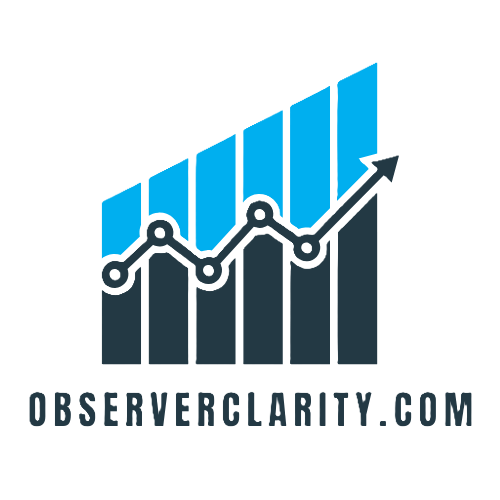In a world where self-improvement is the new buzzword, crafting a personal development plan is like giving your future self a high-five. It’s not just about jotting down goals; it’s about creating a roadmap to success that even GPS would envy. Whether you want to master a new skill, boost your career, or simply become a more fabulous version of yourself, a solid personal development plan sets the stage for all that and more.
Personal Development Plans
Personal development plans serve as essential tools for self-growth. A structured approach aids individuals in identifying goals and tracking progress.
What Is a Personal Development Plan?
A personal development plan outlines specific objectives for personal and professional improvement. It details actionable steps towards acquiring new skills, enhancing knowledge, or improving personal qualities. This plan acts as a roadmap, guiding individuals through their self-improvement journey. Individuals clarify aspirations and prioritize areas for growth, ensuring a focused approach.
Benefits of Having a Personal Development Plan
Having a personal development plan offers several advantages. People experience increased motivation and accountability as they set clear goals. This structured method allows for better tracking of progress toward achieving aspirations. Individuals often gain insights into their strengths and weaknesses, enabling targeted development. Enhanced skills directly correlate with career advancement opportunities. Furthermore, such plans promote self-awareness, leading to more informed decisions and improved life satisfaction.
Key Components of a Personal Development Plan

A personal development plan consists of several key components that facilitate growth and success. Each element contributes to a structured approach toward achieving individual goals.
Setting Clear Goals
Clear goals define specific outcomes individuals want to achieve. Objectives should be measurable to gauge progress effectively. Targeting both short-term and long-term aspirations creates a balanced roadmap. For instance, one might aim to improve communication skills within six months while pursuing a five-year career advancement goal. Using the SMART criteria—Specific, Measurable, Achievable, Relevant, Time-bound—ensures these goals remain focused and attainable.
Identifying Strengths and Weaknesses
Understanding personal strengths and weaknesses provides insight into areas for improvement. Individuals often benefit from self-reflection tools like SWOT analysis, which categorize strengths, weaknesses, opportunities, and threats. Recognizing strengths helps leverage them in professional settings. On the other hand, acknowledging weaknesses creates a foundation for targeted improvement programs. For example, if time management is a recognized weakness, seeking training or mentorship in that area enhances overall effectiveness.
Creating Actionable Steps
Actionable steps break down goals into manageable tasks. Each step should be detailed and assigned a specific timeframe for completion. For instance, developing a new skill might involve enrolling in an online course followed by daily practice sessions. Prioritizing tasks within these steps can lead to quicker achievement of goals. Establishing checkpoints for tracking progress encourages motivation and accountability throughout the personal development journey.
Personal Development Plan Example
A personal development plan provides a structured framework for individual growth. This example highlights essential elements to create an effective plan.
Step-by-Step Breakdown
- Identify Goals: Write down specific personal and professional goals. Focus on measurable outcomes for clarity.
- Conduct Self-Assessment: Utilize tools like SWOT analysis. Evaluate strengths and weaknesses to understand oneself better.
- Create Actionable Steps: Break down goals into smaller, manageable tasks. Assign specific timelines to each task for accountability.
- Track Progress: Monitor advancements regularly. Adjust the plan as necessary based on feedback and results.
- Reflect and Adjust: Set aside time for reflection. Make necessary changes to goals and action steps to align with evolving aspirations.
Tips for Tailoring Your Plan
Tailoring a personal development plan ensures it fits individual needs. Begin by considering personal interests and values to guide goal selection. Prioritize goals based on urgency and relevance to current circumstances. Incorporate flexibility to adapt to unforeseen changes in life situations. Make regular updates to the plan as achievements occur or new dimensions arise. Utilize resources such as books, workshops, and mentorship to support ongoing learning.
Common Mistakes to Avoid
Creating a personal development plan involves planning but also potential pitfalls. Recognizing common mistakes can enhance the effectiveness of these plans.
Overgeneralization of Goals
Focusing on broad goals leads to vague outcomes. Ambiguous intentions like “become successful” lack specificity and direction. Clear, measurable objectives represent actionable steps toward progress. For example, choosing “improve public speaking skills” provides a defined focus. Setting SMART goals strengthens clarity, allowing for measurable achievements. Individuals must break down larger aspirations into smaller, manageable tasks. Each task needs a timeline, facilitating steady progress and accountability. Goal-setting fosters direction essential for growth; without that direction, progress stalls.
Lack of Accountability
Accountability plays a vital role in achieving personal development goals. Without mechanisms to track progress, motivation often fades. Sharing goals with trusted friends or mentors can create external accountability. Consistent check-ins with oneself or others encourage maintaining focus. Documenting achievements and setbacks offers insights and reinforces commitment. Utilizing tools like journals or apps aids in keeping track of milestones. Establishing regular reflection periods helps identify areas for improvement. Importantly, accountability transforms aspirations into tangible results, supporting ongoing personal growth.
Conclusion
A personal development plan is a powerful tool for anyone looking to enhance their skills and achieve their goals. By creating a structured approach to self-improvement individuals can navigate their personal and professional paths with clarity and purpose. This plan not only fosters accountability but also encourages continuous growth and self-awareness.
As they implement their plans it’s crucial to remain flexible and adjust goals as needed. Regular reflection on progress can lead to valuable insights and greater motivation. With dedication and the right strategies in place a personal development plan can truly transform aspirations into reality.




